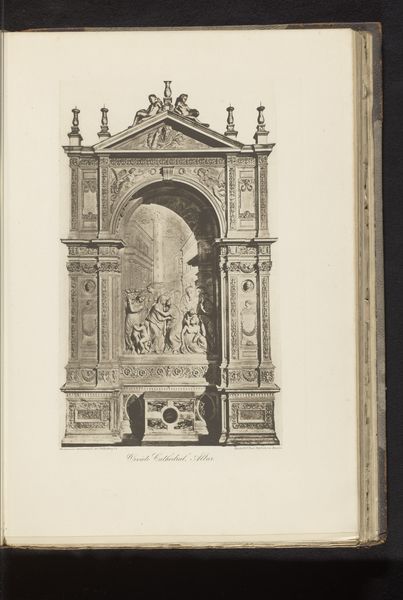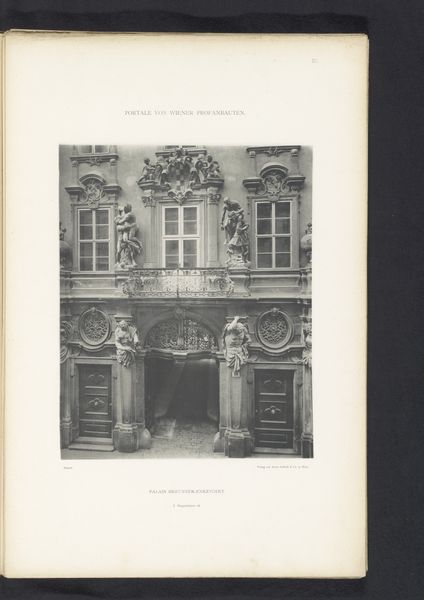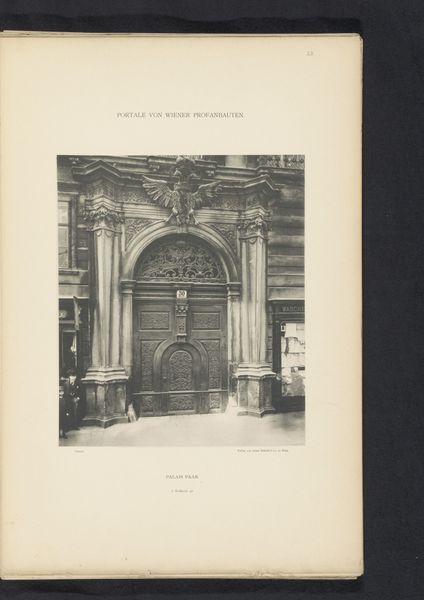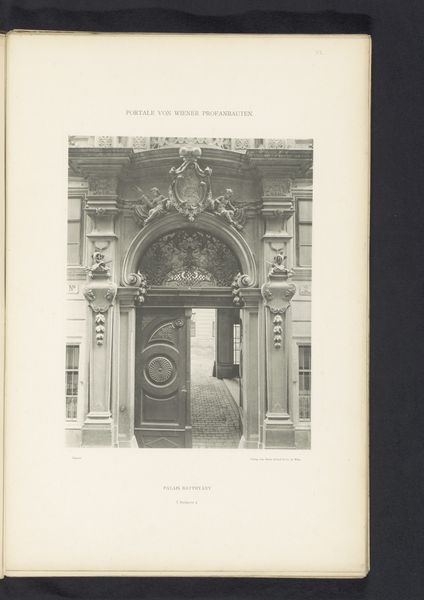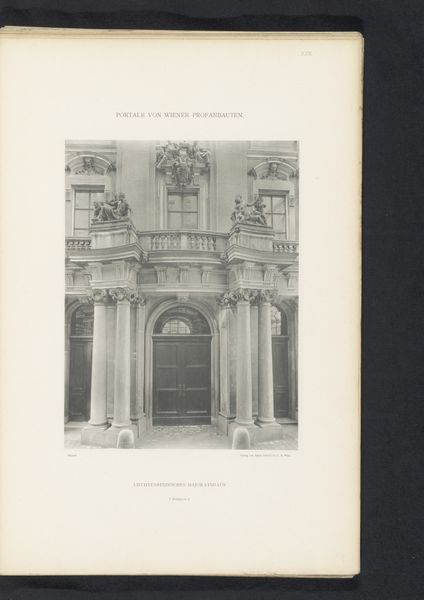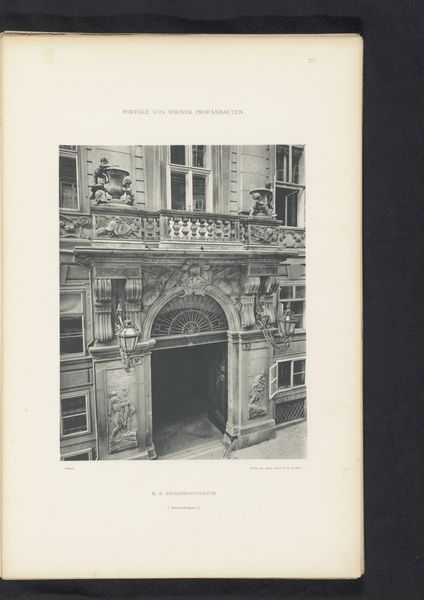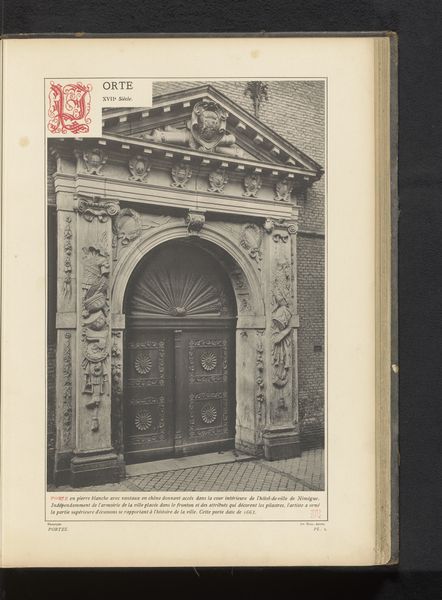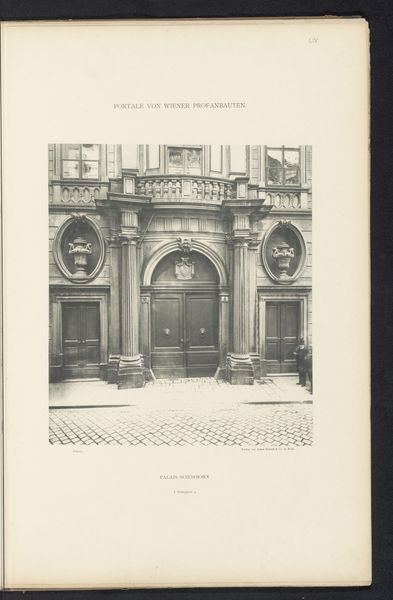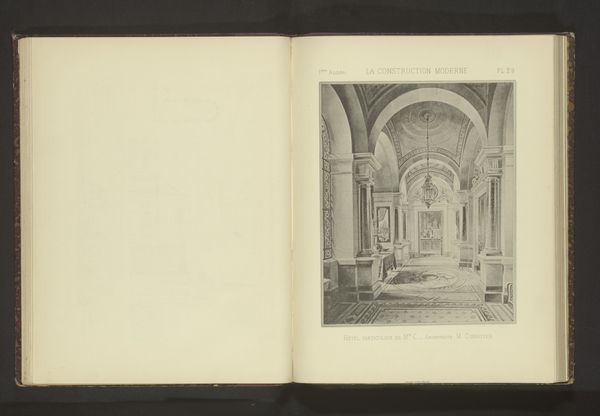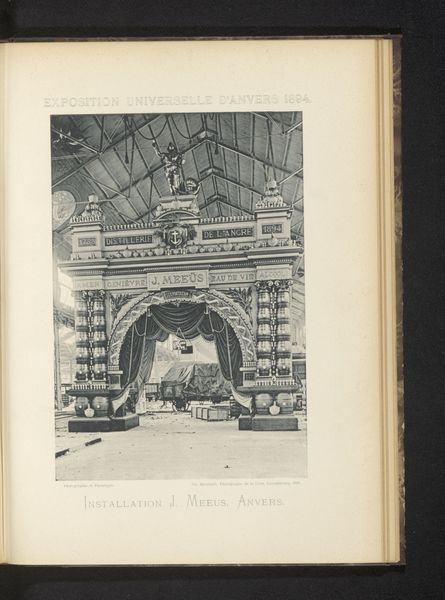
Gezicht op de ingang van een muziekzaal in het Duitse deel van de Wereldtentoonstelling van Antwerpen in 1894 1894
0:00
0:00
Dimensions: height 215 mm, width 152 mm
Copyright: Rijks Museum: Open Domain
Curator: This photograph, dating from 1894 by Charles Bernhoeft, captures the entrance to a music hall within the German section of the World Exhibition in Antwerp. It strikes me as grandiose and perhaps a little intimidating. Editor: Intimidating? I see it more as assertive, especially considering the materials and implied labor. These aren’t mere decorations, but testaments to specific craft traditions being showcased. Curator: Precisely! We’re looking at the culmination of German artistry, brought to an international stage for appraisal and, inevitably, comparison. Look at the meticulously carved pillars, the bas-relief figures above the entrance – all indicative of the skill involved. Editor: Absolutely, and skill supported by resources. This exhibition architecture embodies a particularly interesting power dynamic. Who decided which artisans and materials would represent the nation? Were local laborers used? The answers to these questions give a context for the piece that makes it resonate far beyond pure aesthetics. Curator: That’s a valid point. Focusing solely on the visuals, I find the composition so formal. The symmetry, the imposing eagles…it projects an image of power. And think of what music would have been playing inside; what audiences were being catered to at this salon? Editor: Which again brings us to the issue of representation. Whose culture was being elevated? What voices were deemed worthy of amplification within this very carefully constructed space? Consider, too, the limitations of photography at this time; the light sensitivity of these photographic prints must have dictated particular exposure considerations in turn subtly changing or affecting the image. Curator: Indeed, it underscores that the apparent celebration of global unity during such events often obscured underlying colonialist narratives. By critically assessing Bernhoeft’s print, we bring attention to the dynamics involved and enrich appreciation with a critical understanding. Editor: Right; what first presents itself as neoclassical exuberance really speaks volumes on labour, class, and power under the cloak of fin-de-siècle ambition. Curator: A reminder that art—even architectural photography of a temporary exhibition structure—reflects, and often reinforces, specific worldviews and societal priorities.
Comments
No comments
Be the first to comment and join the conversation on the ultimate creative platform.
